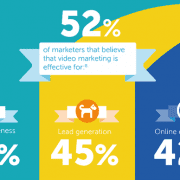How to Get SQF Certified: The Only Guide You Need to Read

Any establishment that’s involved in the production, manufacturing, processing, storing, transporting, distribution, or selling of food or beverages should have a rigorous and reliable food safety management system. One of the surest ways to guarantee food safety is by becoming SQF certified.
SQF certification is highly recognized by the Global Food Safety Initiative. It’s the chief production certification in the manufacture, distribution, and agent management of food. By becoming SQF certified, you’re demonstrating your commitment to providing your supply chain and clients with products of the highest quality.
In this comprehensive guide, we tell you all you need to know about SQF certification, including how to get certified. Read on to learn more.
What Is SQF?
First off, SQF stands for Safe Quality Food. The SQF program is a food safety management certification scheme that controls food safety risks. The program is developed and managed by the SQF Institute.
As soon as you’ve finished implementing your food safety management system, a third-party certifying body audits and certifies it.
Why Should You Get SQF Certified?
Over the years, an increasing number of food establishments have been taking on the challenge of obtaining SQF certification. But what is SQF certification good for? Below are four reasons.
To Build Trust
The modern consumer only buys food they trust. Retailers and foodservice providers refrain from selling products that don’t guarantee their customer’s safety. Having an SQF certification, therefore, can help put your clients’ minds at ease.
To Manage Risk
A robust food management system enables your company to manage food safety hazards effectively. You get to create an environment where you can consistently produce safe products.
To Retain Current Customers
An increasing number of companies want their suppliers to become certified as well. To remain competitive and retain existing customers, food companies are now taking SQF certification very seriously.
To Broaden Your Market Reach
The top multinational manufacturers and retailers now demand that companies that supply them with products become SQF certified. If you’ve been thinking of doing business with these large companies, getting certified is an excellent place to start.
The SQF Certification Process
So how does one get SQF certified? Below is a step-by-step guide.
1. Understand the SQF Code
The first step to achieving SQF certification involves learning about the program and the SQF Code. There are many ways to do this. Below are some suggestions:
- Take an online training course on how to implement SQF systems
- Train yourself using SQF documents available for free online
- Visit a licensed SQF training center to attend a course on implementing SQF systems
- Attend a seminar or information day on SQF certification
- Take an online exam on implementing SQF systems
2. Register Your Food Company With the SQFI Assessment Database
Now that you have a good grasp of what the SQF program and Code are all about, it’s time to register your company with the SQFI assessment database. You’ll need to pay a registration fee based on your company’s gross sales. You can check out the registration fee structure online.
3. Appoint a Chief SQF Practitioner in Your Company
An essential SQF requirement before certification is for your company to have an individual who’ll serve as the internal expert on SQF. You may need to organize for SQF training for one of your employees to take up this role.
4. Choose the SQF Certification Level
Generally, companies can choose from three levels of SQF certification.
- Level 1 is meant for low-risk products: this level incorporates essential food safety controls
- Level 2 is a fully certified HACCP food safety scheme that is benchmarked by GFSI
- Level 3 involves a comprehensive implementation of the safety and quality management systems
5. Getting Quotes from SQF Certification Bodies
This step entails contacting a reputable SQF certification body to get details of the certification audit and get quotes.
6. Conduct a Pre-Assessment
This step aims at identifying any gaps that may stand between your food safety program and the level of certification you desire. A pre-assessment can be done by your SQF practitioner or an external SQF auditor. While this step is optional, it can significantly benefit your company.
7. Book an Audit With a Certification Body
There are licensed SQF certification bodies scattered around the country. Choose one near you and contact them for an audit of your company.
8. Go Through Certification Audits
Once you’ve settled on a credible certification body and invited them to audit your company, they’ll focus on facility assessment and document reviews.
What Next?
Upon the completion of all the steps above, the SQF body will now make a certification decision. If your company achieves a “C-complies” audit rating or higher, you’ll be awarded an SQF certification.
How Does Long It Take to Get Certified?
The preparation for SQF registration can be quite involved. You’ll need to build a food safety management system, document that system, and implement it within your organization. On average, it takes between 8 and 12 months to get ready for certification.
Of course, the time frame for certification may be longer or shorter than the average, depending on your company’s specific circumstances.
Once your facility has been audited, you’ll get a certification decision from the SQF certification body within 45 days. After you’ve been certified, you’ll get a certification number from the SQF Institute. This number is unique to your organization’s site.
SQF Certification Costs
The process of achieving SQF certification comes at a cost, both in terms of time and money. We already mentioned that the preparation for SQF certification could take up to a year. In this section, we’ll tackle some of the areas you’ll need to spend money on.
An SQF Practitioner
As stated earlier, every organization that wants to get SQF certified must have an internal SQF practitioner. That practitioner must meet the following requirements:
- Be a full-time member of staff in your company
- Have gone through a HACCP based course
- Have a good understanding of the SQF code
- Know how to implement and maintain Agricultural And Manufacturing Best Practices
- Understand the requirements for implementing and maintaining the SQF system.
You can consider hiring an expert who’s already certified and has industry experience or choose to appoint one of your existing personnel and train them. If you choose the latter, you’ll need to budget for the training and certification expenses. Factor in how much you’re going to be paying the employee in terms of SQF practitioner salary.
An SQF Consultant
You may be wondering why you have to pay an SQF consultant when you already have a full-time SQF practitioner in your company. Well, chances are your full-time SQF expert will need assistance when developing an SQF program or in perfecting certain aspects of the program. This may require you to engage the services of a third-party consultant.
The costs of hiring an SQF consultant can vary. Typically, consultants charge you hourly rates based on their level of experience. The final cost will depend on:
- The scope of the project
- How elaborate the process is
- How much your internal SQF practitioner can accomplish without third-party help
Re-Certification Fees
After you’ve obtained SQF certification, you’ll need to get re-certified every year to remain compliant. The cost of recertification varies according to the size of the facility, the number of HACC plans you have, and how many employees you have.
Site Preparation Costs
The biggest chunk of time and money goes to preparing your site for SQF certification. Generally, you must ensure that your physical building and the equipment you use pose no physical, biological, or chemical contamination risk to your final product.
Some of the things you’ll need to invest in include:
- Suitable materials for various surfaces—the materials you use should not be corrosive—similarly, they shouldn’t be easily breakable or wear down, ending up in the ingredients or final product (avoid copper, wood, glass, and rigid plastics)
- Proper floor drainage—if any of your processes involve the use of water you need to set up drains at the right places to let the water leave (bacteria and other pathogens thrive in damp conditions)
- Ease of cleaning—keep potential contaminants away from your surfaces and equipment (in part by ensuring the materials used for your surfaces and equipment are easy to clean)
Other site preparation costs involve ample lighting, proper ventilation, enough storage space, and appropriate water quality. The site must also be able to keep the final product safe from pests and other contaminants from the outside environment.
Getting SQF Certification Is Good for Your Business
Getting SQF certified isn’t something that only giant suppliers should do. Every organization that deals with food can benefit from this certification. The SQF Code helps you boost your food safety management system, which is good for both your business and your clients.
Would you like to read more great content like this? Please keep visiting our blog.













Leave a Reply
Want to join the discussion?Feel free to contribute!